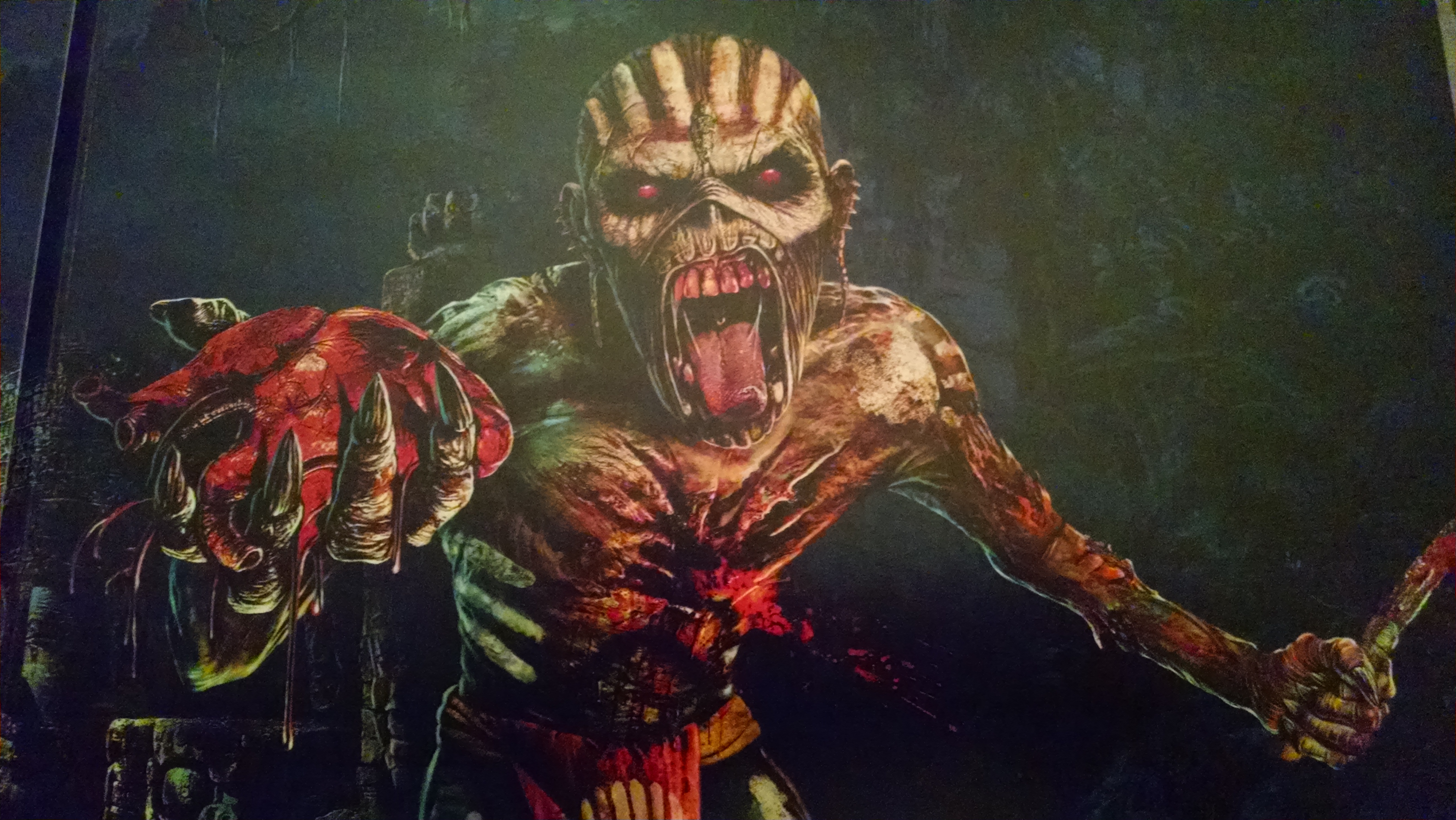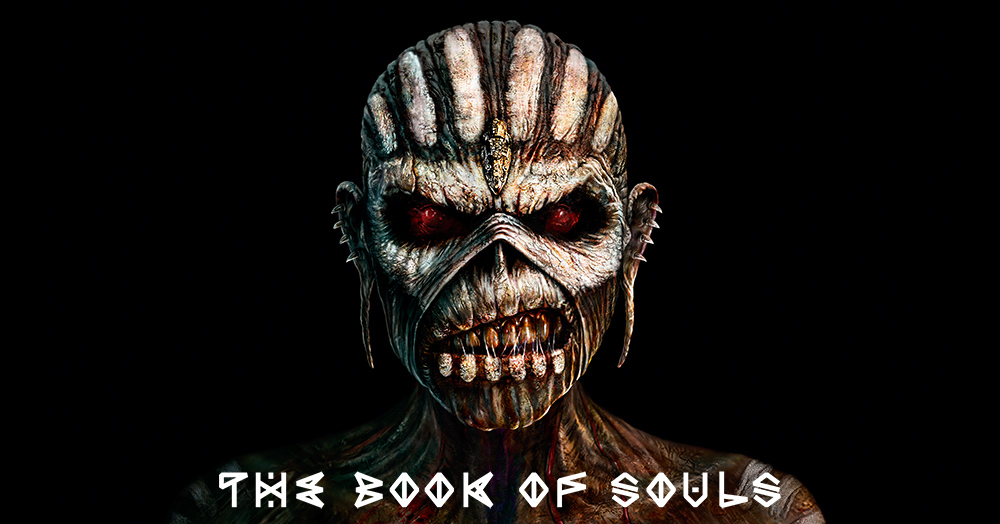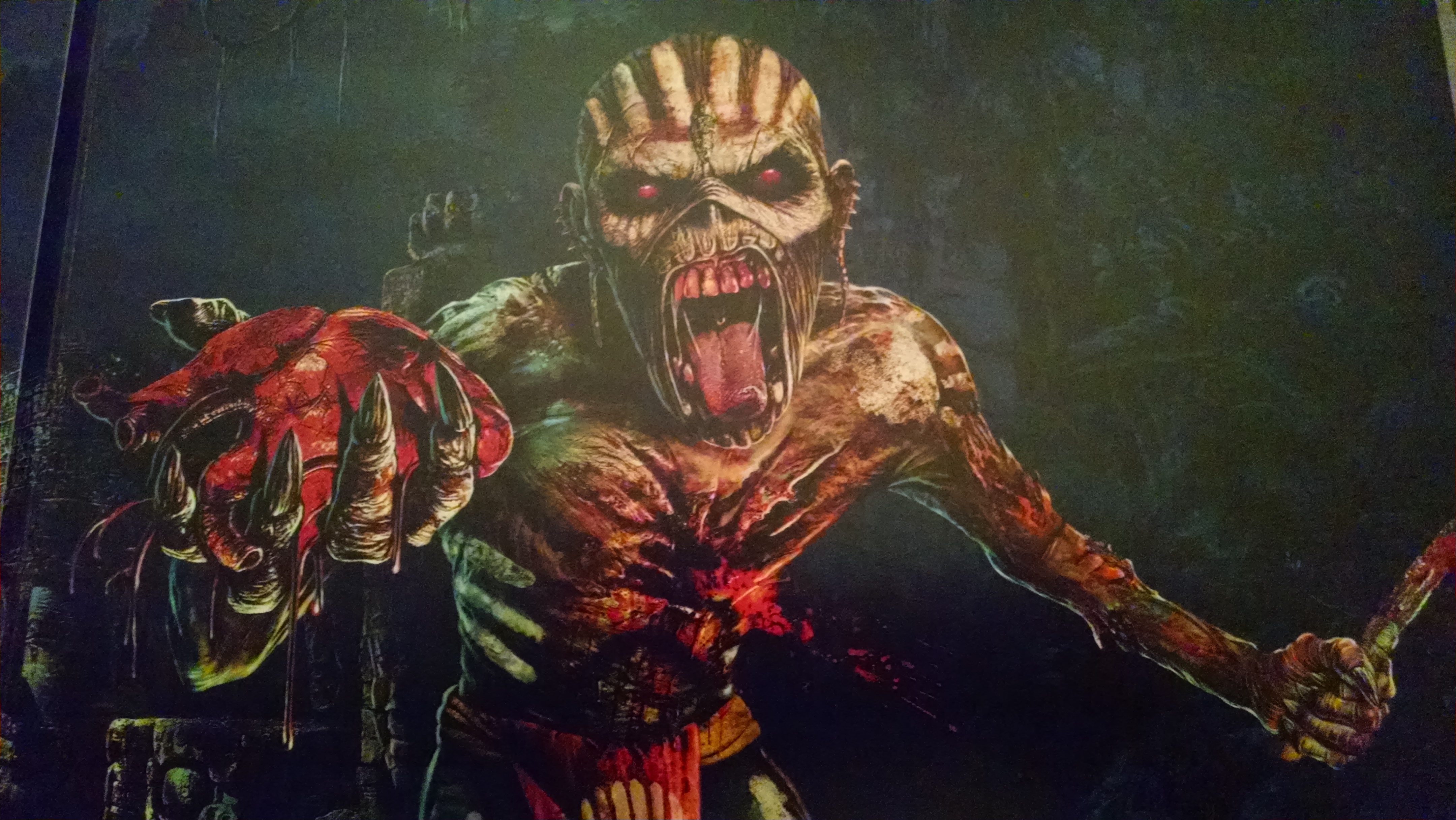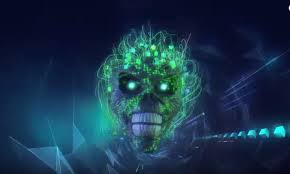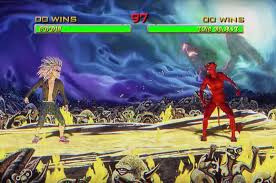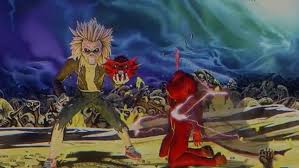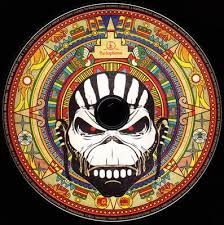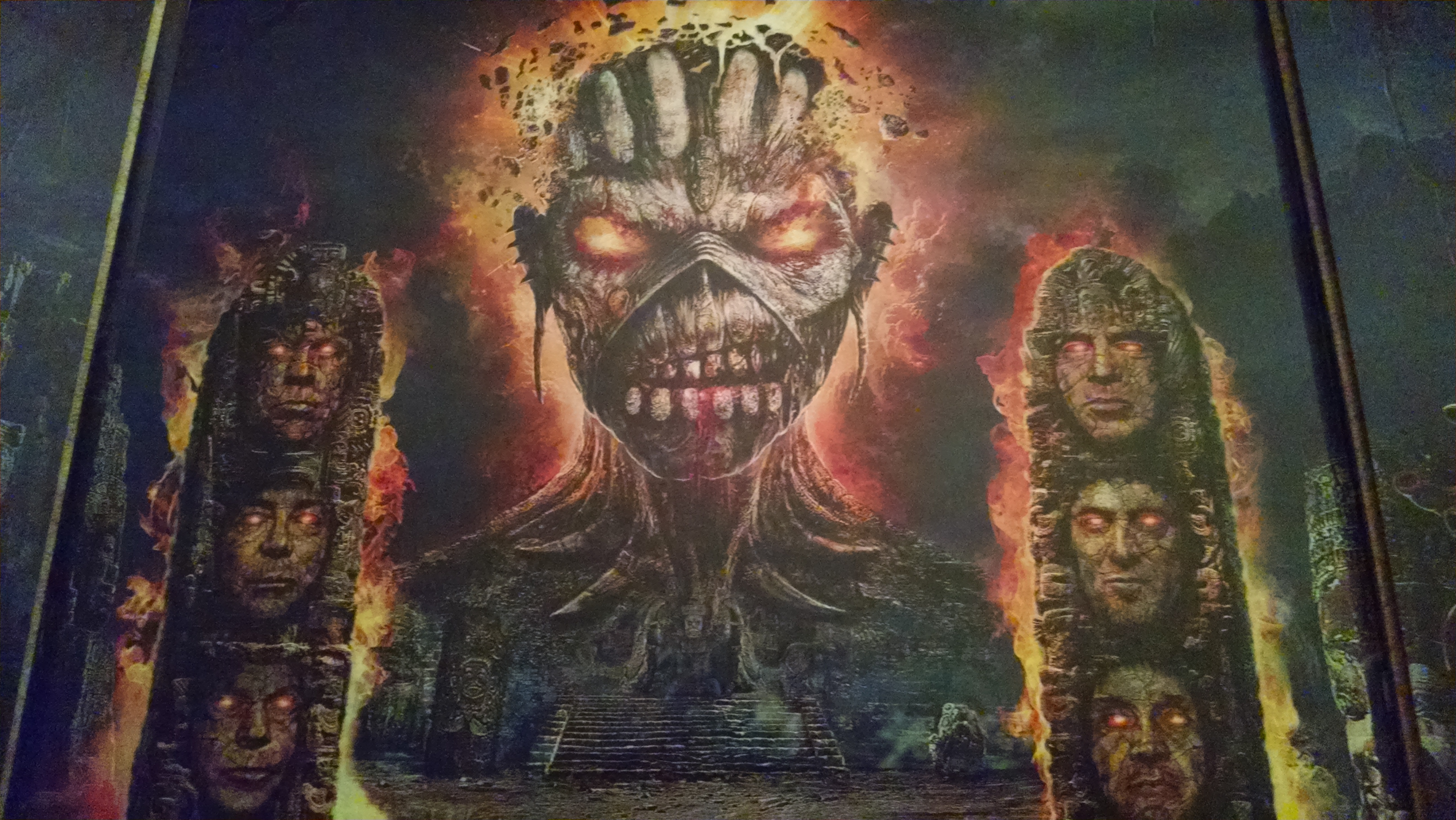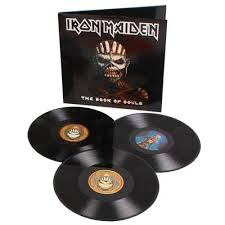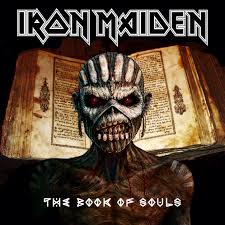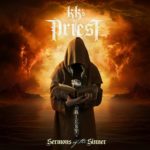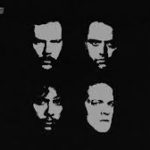IRON MAIDEN – THE BOOK OF SOULS ALBUM REVIEW
Fifteen years have passed since Iron Maiden reunited with Bruce Dickinson and Adrian Smith. Brave New World, made it apparent that a new Iron Maiden had reared its head. Rambling lyrics and clean guitars were miles away from vintage Maiden. Tours promoting new albums focused almost exclusively on newer material.
Many older fans felt abandoned but the strategy of divorcing past from present proved wise. Iron Maiden emerged a contemporary success rather than a nostalgia act. Secure in this triumph, the band finally seems comfortable embracing their history within the context of a new album. The Book of Souls pays homage to the past while retaining all elements that comprise modern Maiden. To me, this is their best album since Seventh Son of a Seventh Son.
Nowhere is a reconnection with the past more evident than the album cover. The reunion records were a personal disappointment, not only for stylistic changes musically, but also for their second-rate artwork.
It broke my heart to see the face of Eddie reduced to an ominous cloud haunting a city. Sure, technically Eddie was always present, but tucked away in a corner, obscured by a host of forgettable characters. It angered me that my favorite band took such blasphemous steps to distance themselves from a glorious past. Relegating Eddie to the margins was practically unforgivable in my eyes.
The Book of Souls returns Eddie to his glory days. Menacing, with glowing red eyes, we have the greatest Iron Maiden cover in decades. A simple black background not only gives the record a dark, foreboding vibe, but also enhances the threatening features of Eddie. Void of a body, incredible detail shows just how intimidating metal’s greatest mascot can be. I even found myself scanning the liner notes to see if Derek Riggs had returned to the Maiden camp.
Inside is where the artwork really shines. Simplicity gives way to complexity as a Mayan civilization theme unfolds across the inner sleeve. Like the Egyptian pyramids of Powerslave and the futuristic cyborg Eddie that graced Somewhere in Time, a concept that loosely defines the album is brought to life. The band even hired a Mayan scholar to ensure the accuracy of the artwork. The entire package reveals the professionalism that has kept the band a thriving force on international stages.
The Book of Souls opens with the Bruce Dickinson penned, “If Eternity Should Fail.” The song feels like a “Moonchild” for the millennium. It is consciously epic and carefully constructed as the introduction to an ambitious album.
Bright and airy, yet also dark, Dickson’s voice is drenched in echo as he sings over ominous keyboards. When the guitars enter in harmonized glory, it is the sound of classic Maiden.
Verses give the song a feel of forward momentum but the chorus fails to elevate the song. Initial impressions left me wanting an exponential increase in energy. I wanted a visceral, painful SCREAM from Bruce. Lyrically, the world sits on the edge of collapse. There should be emotion and a sense of urgency. Instead, the vocal delivery seems cold and clinical. Technically proficient, but lacking the fire that gets blood pumping. Alas, this is not 1985.
At over eight minutes, the track is slow to reach its potential. The tempo finally picks up after the second verse. Nicko tears into a drum roll and Steve’s bass enters before harmonized guitars dance wildly. It’s the sound of Iron Maiden being Iron Maiden.
Shortly after the seven-minute mark, my favorite 30 seconds of a 90 minute album enters. The introduction of Necropolis finds Maiden breaking new ground. Acoustic guitars paint a haunting soundscape beneath a spoken word passage. It’s dark. Textured. Threatening. Purely a studio creation, the section is over quickly. It’s a shame. Reprising this sound could have offered dynamics and a sense of continuity.
“Speed of Light” is the first of many Smith/Dickinson contributions. This song initially annoyed me. It strikes me as a failed attempt at creating a “2 Minutes to Midnight” vibe. Perhaps the new direction is best because the other songs capture my attention in ways that “Speed of Light” does not. Repeated listens have softened my stance but it still remains one of my least favorite tracks.
Regardless of my personal impressions, the video is pretty damn admirable. Again, we find Maiden proudly embracing their past. Immediately, one notes the familiar opening image from the “Wasted Years” video. Even the ridiculous video game theme cannot ruin the joy of seeing classic Eddie moments come to life. Images from classic albums lurk in the background. Art from the “Run to the Hills” and “Number of the Beast” singles come to life as Eddie battles with the devil. It’s fun to watch.
“The Great Unknown” is another Smith/Dickinson track. The intro reminds me of Somewhere in Time/ Seventh Son era Maiden. The guitar tones sound familiar and comforting. My only complaint is the same issue that plagues most songs on The Book of Souls. Although it’s one of the shorter tracks, it feels too long. At four minutes, “The Great Unknown” would be highly effective. Approaching the seven mark causes the song to lose its potency. Still, it’s a satisfying addition to the latest Maiden effort.
“The Red and the Black” is one of the strongest tracks on the album. The title brings to mind the Blue Oyster Cult song of the same name. Not just any BOC song but a representation of the pre-“Don’t Fear the Reaper” years. This is significant as it brings to mind an earlier era where bands relied on rawness and energy to fuel a series of well-constructed riffs. Surely this connection was not lost on Steve Harris.
The song is upbeat, complex and well arranged. Each section flows into the next quite naturally. Nicko lays down a great stomping march that is the perfect groove for chugging guitars straight out of Powerslave. Themes and melodies weave in and out. Silly woa’s in the chorus remind the listener of “Heaven Can Wait.” Approaching the 14-minute mark, at no point does listening feel like a chore. Steve Harris has written his best song in years.
Another standout track is, “The Book of Souls.” Janick has brought a valid contribution to the table. Clean guitars serve as the perfect introduction to a heavy riff that grooves. The riff is reprised between verses and the clean guitars return at the end to bookmark the song quite nicely. This may be the most interesting song from a guitar perspective.
The song takes a strange turn shortly before the 6-minute mark. “Losfer Words” is so clearly invoked that it actually bothers me. The passage promptly gives way to a guitar solo, segues into a short vocal passage, a quick guitar harmony and then “Losfer Words” is reprised. It feels like a hidden joke. Did I win some contest by noticing? Maybe Bruce will fly me to a gig in his plane. In all seriousness, it strikes me as a deliberate effort to celebrate the past as the band moves forward.
Any doubts regarding the intentional use of “Losfer Words” are dismissed after listening to “Shadow of the Valley.” Yes, that IS the main riff from “Wasted Years.” Sure, the timing is a bit off but the notes are clear as day. Need further proof? Just listen to the lyrics. The first verse concludes with Bruce shouting “SEA OF MADNESS,” with delay tacked on at the end for added emphasis. Yes, this is certainly a celebration of Somewhere In Time. Like “The Book of Souls” before it, “Shadow of the Valley” stands on its own as an independent composition.
Perhaps the most discussed track has been the 18-minute “Empire of the Clouds.” The song is given prime real estate, occupying the entire vinyl side that closes out the album. I suppose it’s now embraced as a great epic in the vast Maiden catalogue. Steve Harris unabashedly makes his opinion known. “A masterpiece.” It’s certainly a unique contribution to the Iron Maiden canon.
Driven by a piano with tasteful string embellishments, “Empire of the Clouds” begins with orchestral landscapes of blue sky and white clouds. Phased chords that drift into the mix before quickly dissipating offer the only indication that one is listening to Iron Maiden. Ethereal and majestic, the introduction has no equal in the lengthy history of Maiden.
A truly successful epic song is over before the listener is conscious of time passing. While listening to “Empire of the Clouds,” I’m fully aware that the track is the longest song of Maiden’s career. Bruce seems more concerned with telling a story than with crafting interesting nuances in his vocal delivery. Yes, he tells his tale but why not make us FEEL the unprecedented power of this airborne marvel? Take the line “The fury yet to come.” Put fiery emphasis on the word fury. Dynamics are what made Maiden great. A solid seven minutes passes until the song truly picks up. When the guitars take over, it feels like a reward for listening to the ramblings of Dickinson.
Although the instrumental section never grows tiresome, I’m not convinced that each guitar solo is essential. This song doesn’t NEED to be 18 minutes. Regardless, Maiden’s ability to sonically create a vision of disaster is brilliant. Dueling guitars gives way to a blazing solo. The tempo picks up and accompanies a classic metal riff before harmonized guitars return. Dense keyboard tones weave in and out of the rhythm. Shredding guitars slide in from the left speaker and fill the sound spectrum with frenzy. Bruce is finally shouting. Disaster looms. Dissonance dances. Vocals return to lament a technological triumph reduced to ashes. Gentle piano mourns the tragic loss of life. A fading chord is the final sound of an ambitious song and album.
The Book of Souls, while far from perfect, is exactly the album I wanted from Iron Maiden. Despite initial misgivings, these songs all have exciting moments that capture my attention. Repeated listens are rewarded. Early criticism fades with familiarity. I’m happy this album exists. It’s going to stick in a way that the other reunion records did not. My gut tells me The Book of Souls will withstand the test of time.

